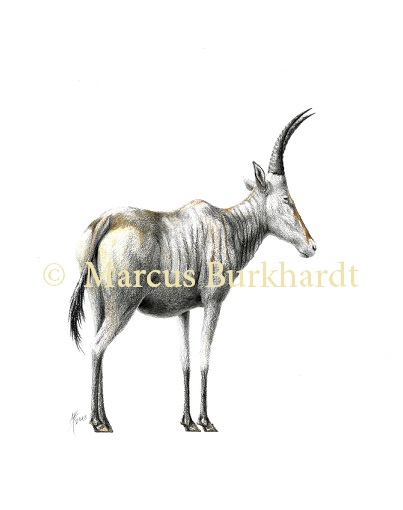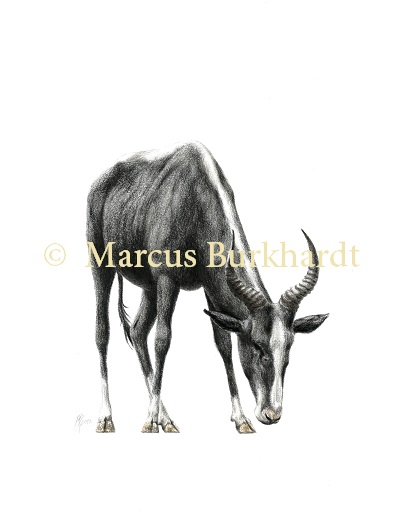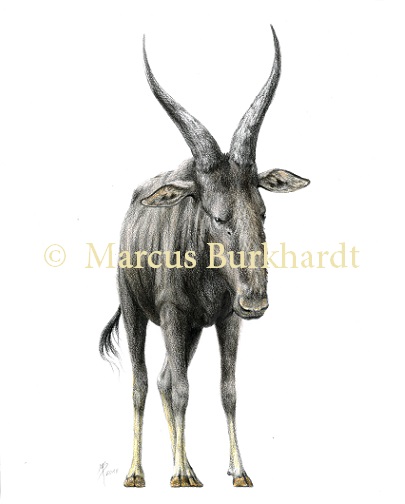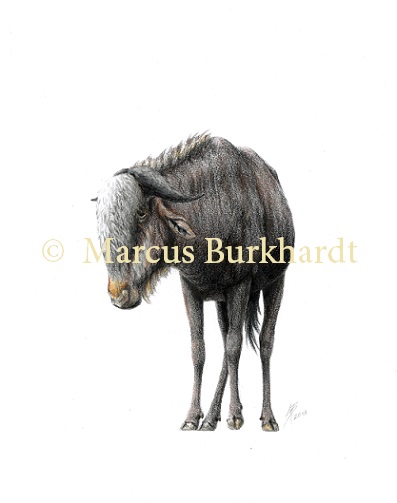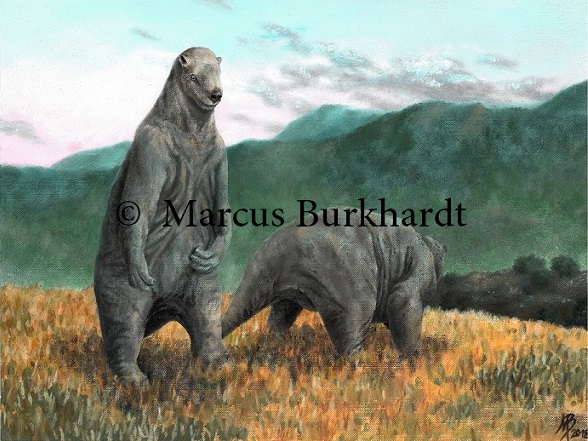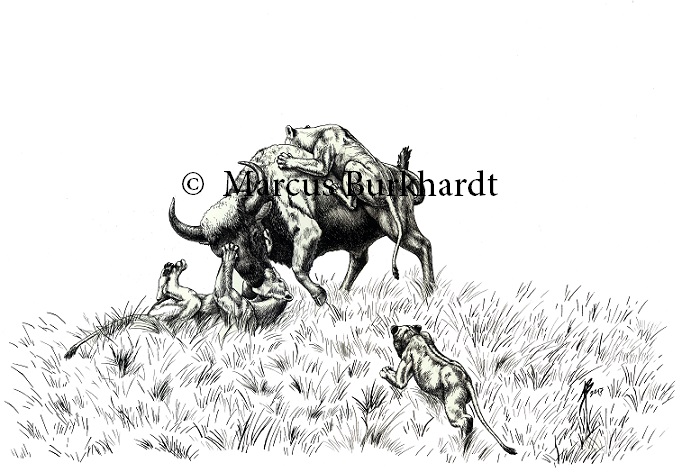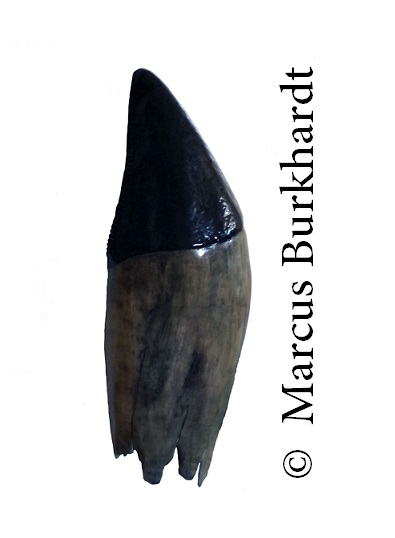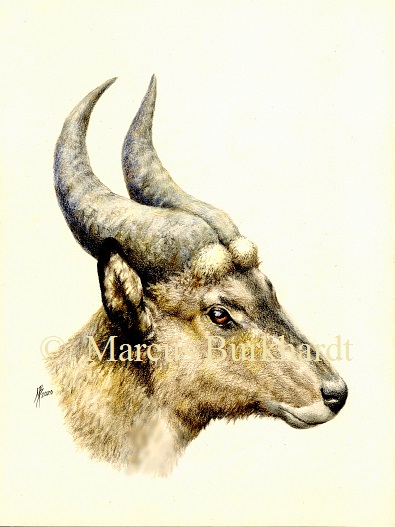
Thaleroceros radiciformis, Lower – Middle Pleistocene, East Africa
This antelope is probably a member of the reedbuck-relatives (Reduncini). This is supposed on account of the direction of the horns and the presence of a second pair of horns. This feature is sometimes visible in modern reedbucks. According to Prof. Dr. Hans Reck (1886-1937), who described the fossil, this second pair of horns were not covered by keratin. Because of the scarce remains, which show not much more than the impressive horns, its systematic position remains unclear.
Coloured pencil, 2020
32 x 24 cm

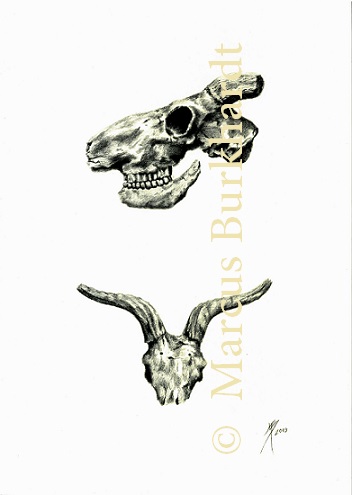 .
.